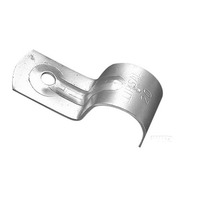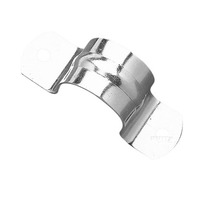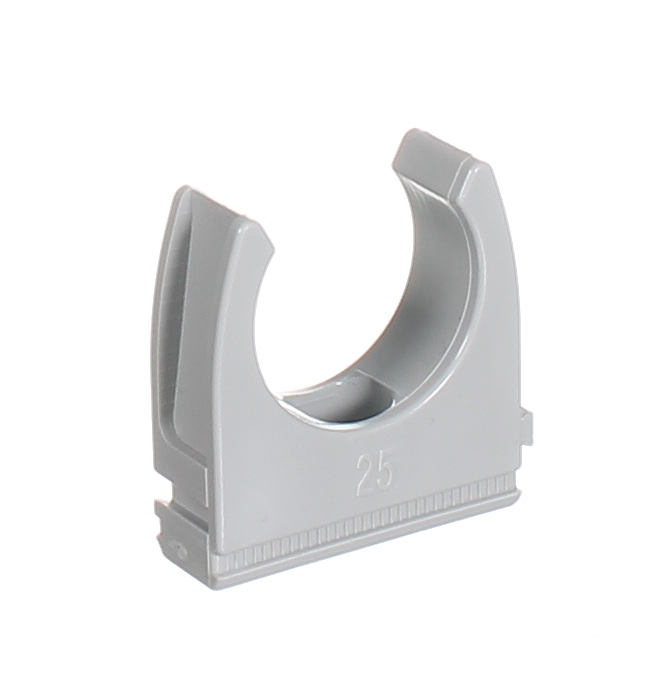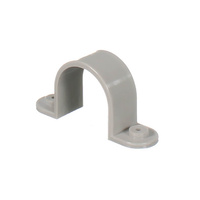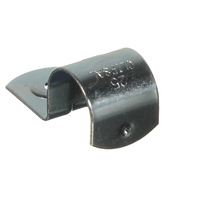Conduit Saddle | Electrical Conduit Saddles
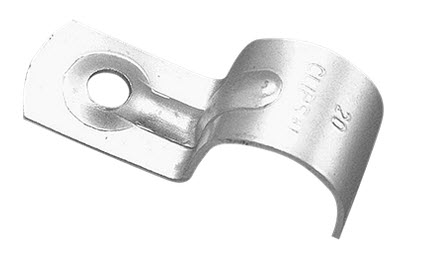
Conduit Saddle: Electricians' tips about conduit saddles
What is a Conduit Saddle?
A conduit saddle is used to secure conduits to a surface. The most common saddles are the metal half conduit saddles and metal full conduit saddles. They are also available in PVC. Furthermore, the saddle can have a variety of hole configurations for different applications.
When it comes to electrical work, you need to use the right tools. One of those tools is the conduit saddle.
What are the different types of saddles?
There are four typical conduit saddles: Metal Half Conduit Saddle, Metal Full Conduit Saddle, Full PVC Conduit Saddle and the PVC Conduit Clip.
The Metal Half Conduit Saddle is the most common type. It has one hole in the centre of the flat side and is most commonly used to secure conduits to a flat surface; the full conduit saddles are often used to secure conduits to curved surfaces. The full conduit saddles have two holes for fixing either side of the saddle.
The Metal Full Conduit Saddle is similar to the Metal Half Conduit Saddle, but it has two holes instead of one: allowing to secure both ends of the conduit with this saddle.
The Full PVC Conduit full saddle is similar to the Full metal conduit saddle and has two screw fixing holes.
The PVC conduit clip is unique because it has a concealed fixing hole. When the conduit is installed inside the clip, it covers the fixing hole.
What are standard electrical conduit saddle sizes?
At Sparky Direct - we sell the following in order from most sold per month to least
- 20mm Half Conduit Saddle
- 25mm Half Conduit Saddle
- 25mm Full Conduit Saddle
- 20mm PVC Clip
- 25mm PVC Clip
- 32mm Half Saddle
- 16mm Half Saddle
What materials are Conduit Saddle made from?
Popular saddles are made from
- Zinc-plated metal
- Heavy-duty galvanised metal
- PVC
- Stainless steel
How far apart should the Conduit Saddle be?
Commonly conduit saddles are installed to stop any sagging of the conduit, so it depends on the size of the conduit.
The rule of thumb for 20 and 25mm conduits is 600mm vertically and 400-500mm horizontally.
Try and install the conduit saddles evenly for a professional job.
How to fix a Conduit Saddle to a surface?
Use one of the following fixings to secure the conduit saddle to a surface.
6mm Masonry drill bit, Green Plugs and Screws, or use a nylon knock-In
Example: on how to install a 20mm conduit half saddle to a concrete wall,
- Drill a 6mm hole with a 6mm masonry drill bit, approximately 28mm deep,
- Clean out the hole,
- Hammer in a 25mm long green plug until it is flush with the surface,
- Place the conduit in the half conduit saddle and then use a 25mm pan head screw and tighten the screw to the wall with a Phillips head screwdriver or battery drill.
Australian Standards for wiring systems for a Conduit Saddle
AS/NZS 3000:2018
Clause 3.9.3 Support and fixing
Clause 3.9.3.1 General
Wiring systems shall be supported by suitable means to comply with Clause 3.3.2.8.
Wiring systems shall be fixed in position by suitable clips, conduit saddles or clamps or by means that will not damage the wiring system and that will not be affected by the wiring system material or any external influences.
Look no further than Sparky Direct if you're looking to buy half conduit saddles, full conduit saddles, and PVC conduit saddles. View our extensive range at excellent prices and shop online for nationwide delivery and Save!

